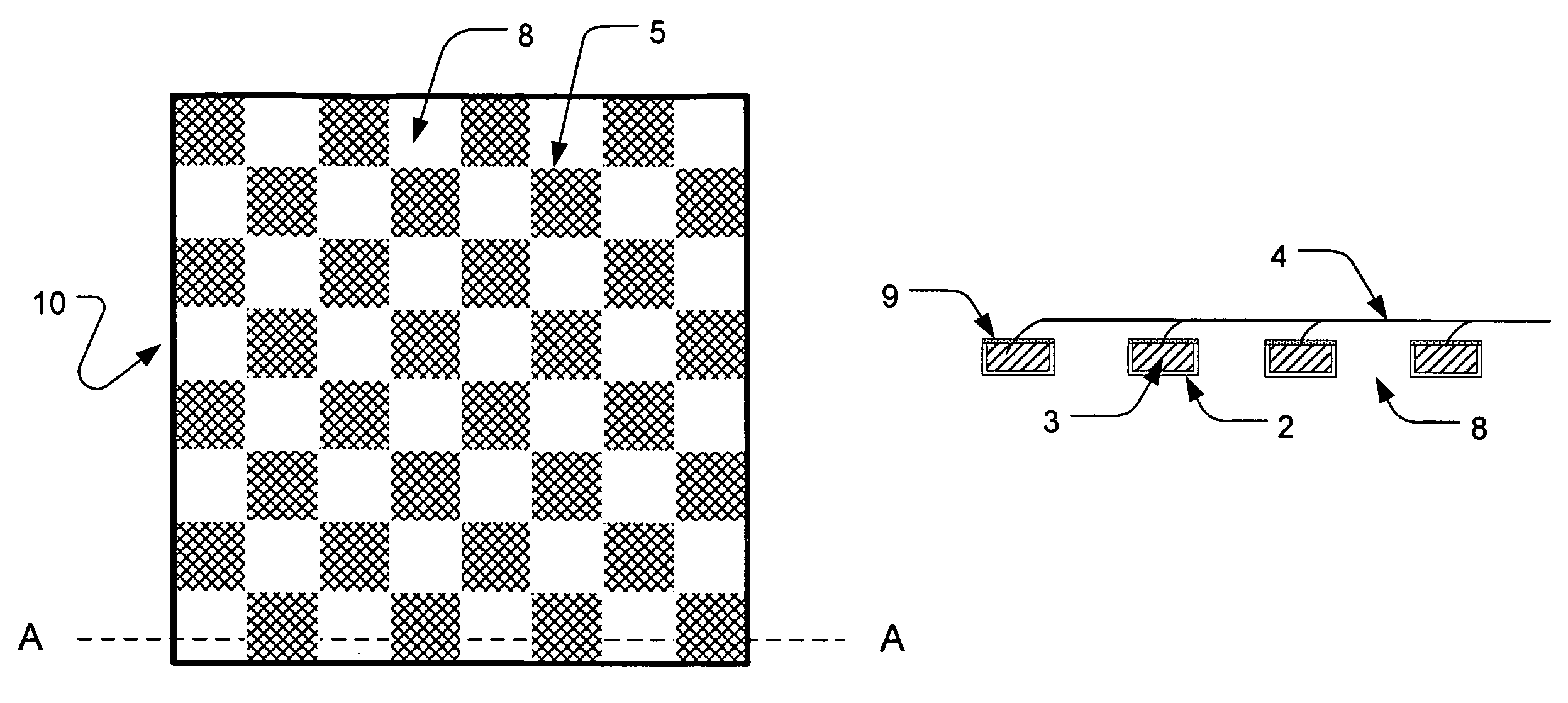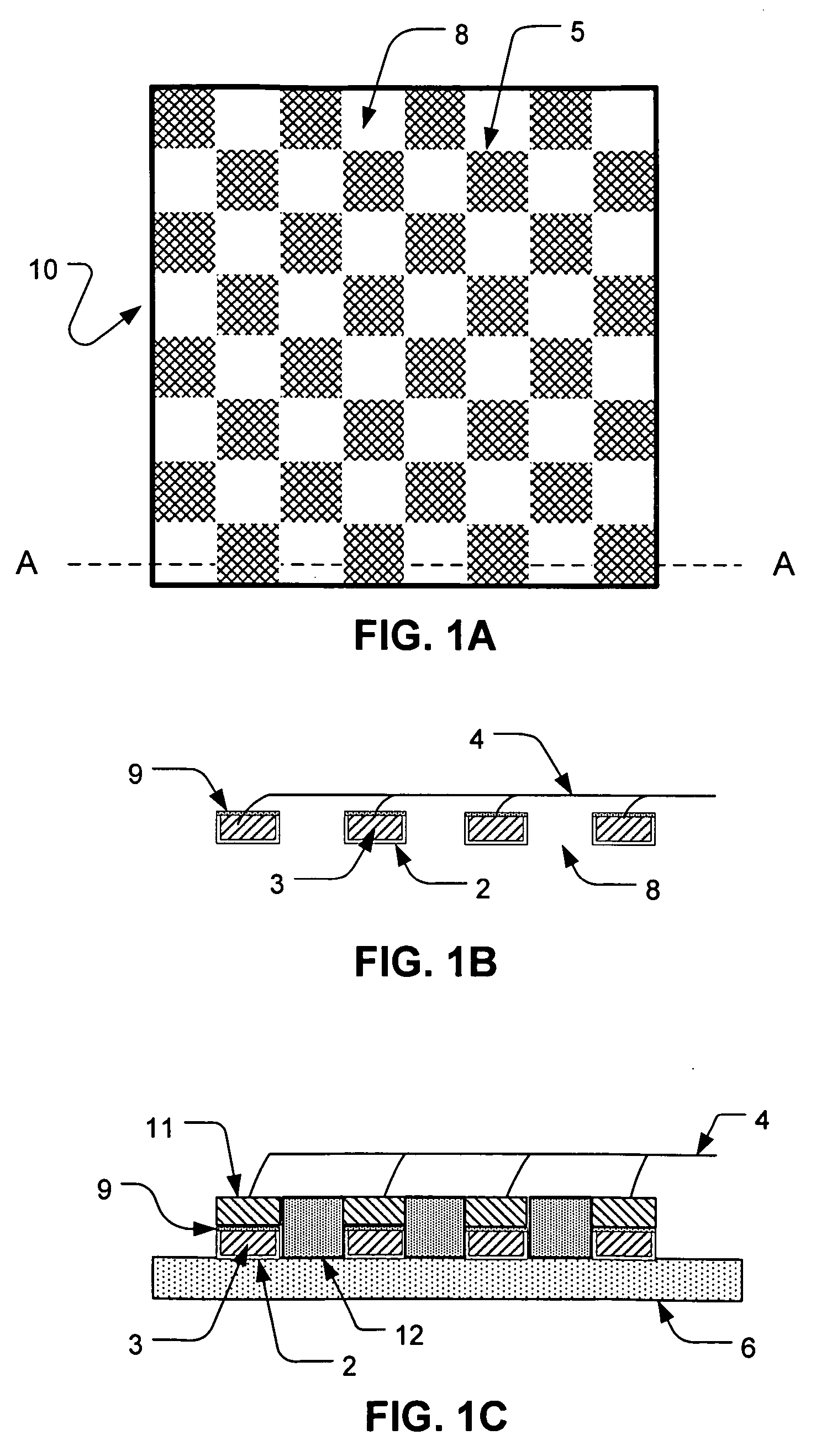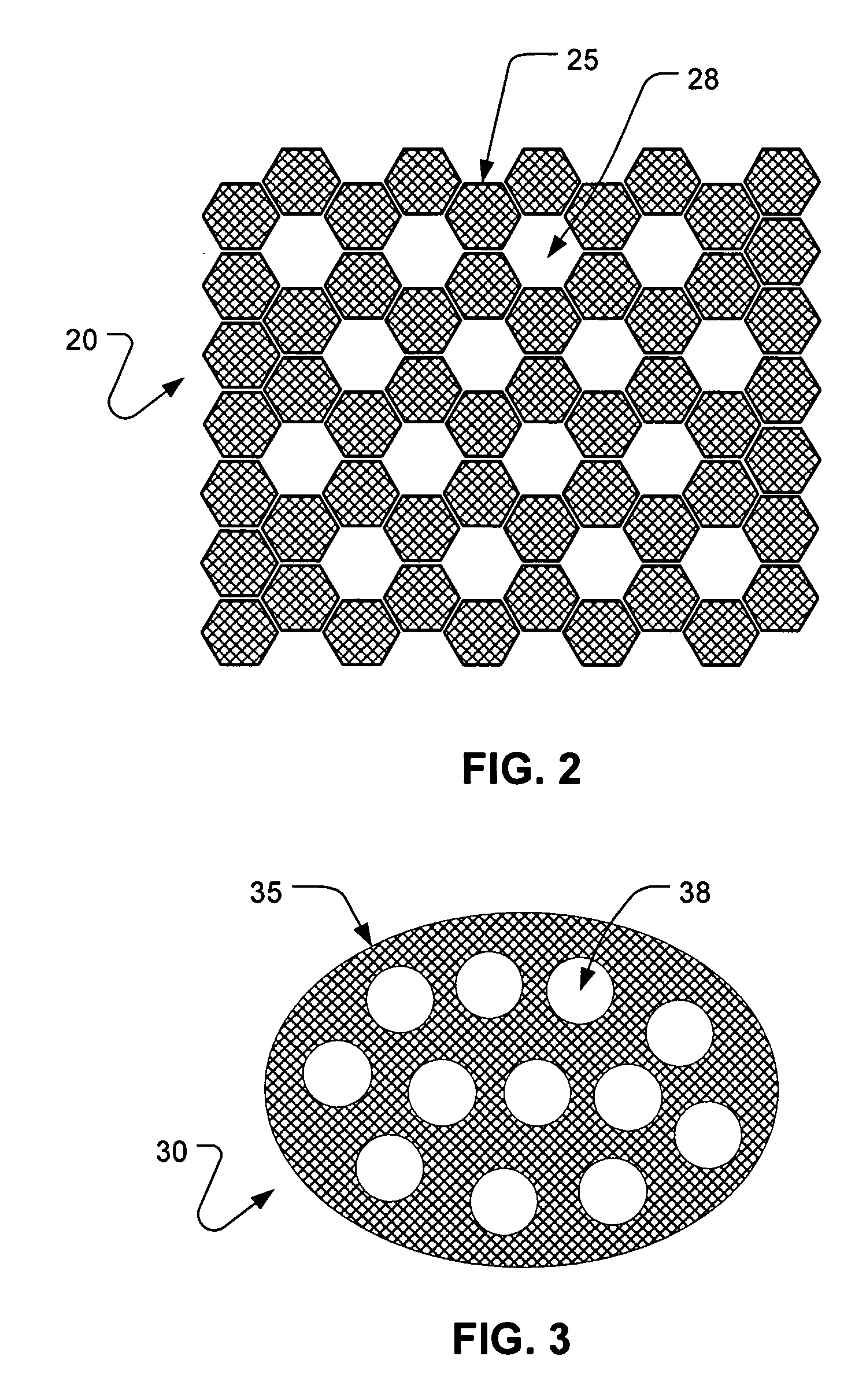Electrodes for applying an electric field in-vivo over an extended period of time
an electric field and in-vivo technology, applied in the field of electric fields for extended periods of time, can solve the problems of increasing tumors, malignant or cancerous tumors, and growing very uncontrollably compared to normal tissue, and reducing the ability to distinguish between tumor cells and normal cells, so as to reduce the side effects of the effect of eliminating or significantly reducing some effects
- Summary
- Abstract
- Description
- Claims
- Application Information
AI Technical Summary
Benefits of technology
Problems solved by technology
Method used
Image
Examples
first embodiment
[0029]FIGS. 1A and 1B depict a composite electrode that is designed for applying an electric field to an in-vivo tumor for extended periods of time. The composite electrode 10 is made up of a number of individual segments 5, with a number of open spaces 8 disposed between the segments 5. The segments 5 apply an electric field to a desired location within the patient's body. Preferred characteristics of the applied field are described in the three patent applications identified above. Those applications teach that electric fields with frequencies between about 50 kHz to about 500 kHz (and more preferably between about 100 kHz and 300 kHz) at field strengths of between about 0.1 V / cm to about 10 V / cm (and more preferably between about 1 and about 10 V / cm) have proven effective at slowing or reversing the growth of rapidly dividing cells (e.g., cancer cells). For example, a 120 kHz, 1.4 V / cm field has been shown to be effective against melanoma, and a 170-250 kHz, 2.5 V / cm field has be...
second embodiment
[0036]FIG. 2 depicts an electrode 20. This electrode 20 is very similar to the electrode 10 of the FIG. 1 embodiment, except that the segments 25 and the spaces 28 of the FIG. 2 embodiment are hexagonal instead of square. Of course, other shapes besides the depicted squares and hexagons may also be used, and the spacing between the segments may be varied as required. The spacing of the segments in these embodiments is preferably selected to provide an adequate amount of field at the target region, while providing adequate ventilation to the skin. The segmented structure of these embodiments can be particularly advantageous in anatomical positions where a large degree of flexibility is needed to conform the electrodes to the skin surface.
third embodiment
[0037]FIG. 3 depicts an electrode 30. This electrode is preferably made of a single piece of conductive material 35, with perforations or holes 38 disposed therein. The lower surface of the electrode 30 (not shown), which contacts the skin of the patient, is preferably coated with a dielectric material similar to the dielectric 2 of the FIG. 1 embodiment. The upper surface of the electrode 30, which faces away from the patient during use, is preferably coated with an insulator similar to the insulator 9 of the FIG. 1 embodiment. The spacing of the holes in this embodiment is also preferably selected to provide an adequate amount of field at the target region, while providing adequate ventilation to the skin.
PUM
 Login to View More
Login to View More Abstract
Description
Claims
Application Information
 Login to View More
Login to View More - R&D
- Intellectual Property
- Life Sciences
- Materials
- Tech Scout
- Unparalleled Data Quality
- Higher Quality Content
- 60% Fewer Hallucinations
Browse by: Latest US Patents, China's latest patents, Technical Efficacy Thesaurus, Application Domain, Technology Topic, Popular Technical Reports.
© 2025 PatSnap. All rights reserved.Legal|Privacy policy|Modern Slavery Act Transparency Statement|Sitemap|About US| Contact US: help@patsnap.com



